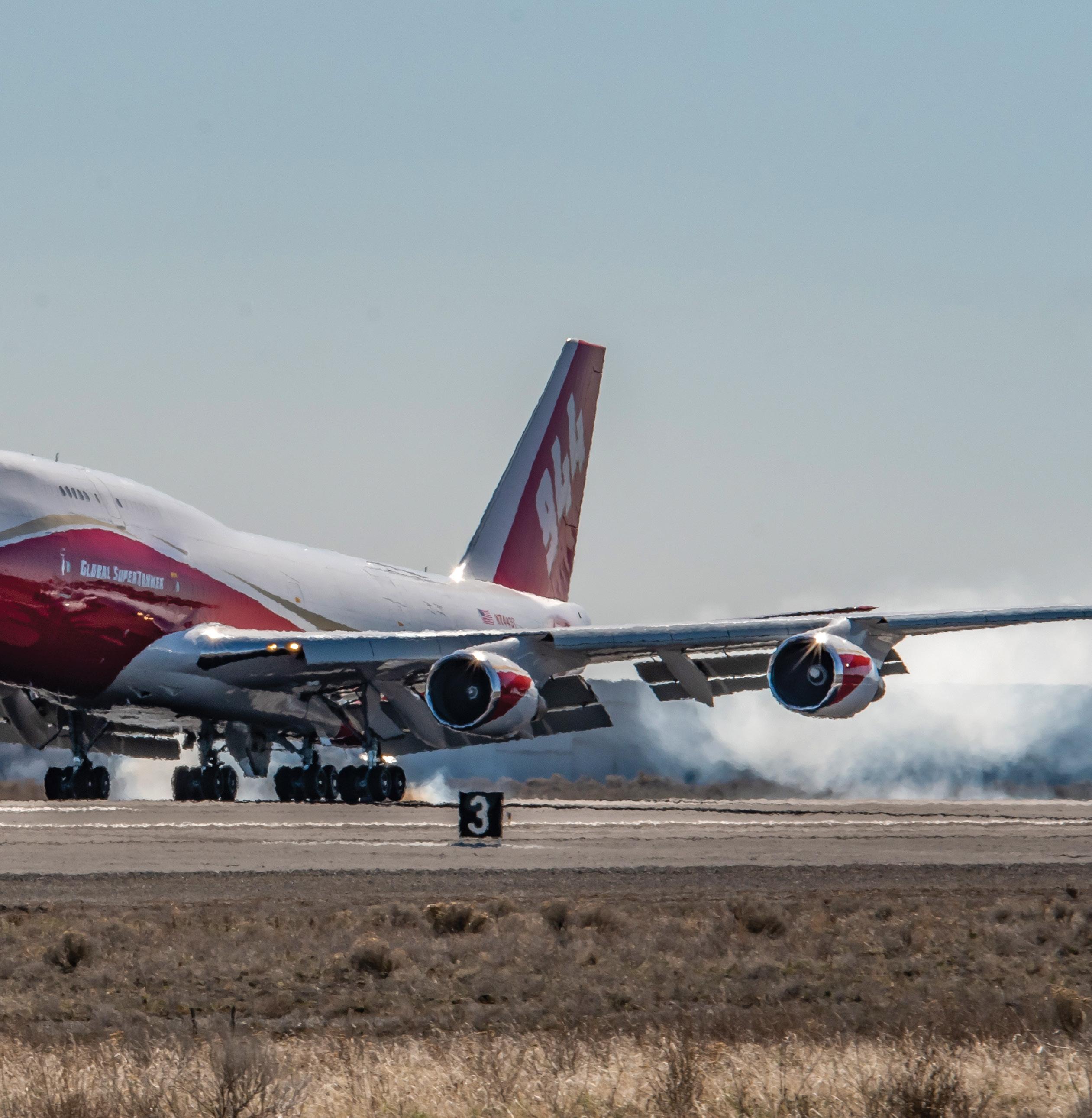
3 minute read
The Drop Ryan Mason
THE DROP
Ryan Mason ryan@aerialfiremag.com
Are We Shooting Ourselves in The Foot?
To say I was shocked this week when I got a call from a confidential source telling me that the Global SuperTanker was going to be ceasing operations at the end of the week would be an understatement.
The largest VLAT in the world was a fixture during fire season, not just in the United States but it had also seen action in South America over its many years of service. Many obstacles likely contributed to its demise. Still, short of a last-minute “Hail Mary” pass in the next few days, the largest aerial asset in the fight against wildfires will likely become a distant memory.
Since the announcement of the impending shuttering of Tanker 944, there has been a massive outpouring of support. For both the aircraft and its highly skilled crew, this is an enormous gut punch.
From CEO Dan Reese, down to its maintainers and pilots, it was clear to anyone who came in contact with someone who worked for the Global SuperTanker company that everyone shared one thing in common: passion. Passion not only for flying, maintaining or managing the giant of the aerial firefighting world, but a passion for saving lives, property and the forested areas that the plane fought to protect every time it took to the skies.
Many were vocal about the aircraft. Some positive and some negative, stating that the aircraft was too big to be effective or too expensive. However, looking through the dozens of social media posts over the last week that have shared personal experiences with the aircraft, the overwhelming response has been one of great sadness at seeing the aircraft grounded, potentially for the last time.
Many have shared stories of firefights that they were losing, looking at the potential for the significant loss of life or property in the face of rapidly advancing fire fronts that smaller aircraft were having a hard time keeping up with.
Stories where dozens of helicopters and smaller fixed-wing aircraft were fighting a losing battle to even make a dent in a rapidly advancing fire. One headed towards a large population center where aircraft couldn’t turn around fast enough to contain the blaze. That is until the call was made to bring in the GST.
One such story detailed a day where fires were popping up faster than every air asset available were able to deploy to fight them. Crews fighting this specific fire were losing hope that the town they were trying to protect would soon be overrun by a rapidly advancing fire that loomed dangerously close to homes and schools, coming down a mountain range and heading for a densely populated area.
Aircraft were being sent elsewhere as more and more fires began to pop up. Cue the call for the GST to come and lay a line of retardant in a last-ditch effort to prevent further spread. The
pilot writing the post detailed watching the giant behemoth of Tanker 944 line up right on the outskirts of the town, lining itself up to lay a line of retardant between the fire and the city.
The GST layed a thick line of retardant on that day that likely saved thousands of lives and just as many properties as the sheer volume of retardant that Tanker 944 put down was enough to give the fire nowhere to go for fuel except away from the town.
This story and many others I have read over the last week are why I, and likely many others, will miss the GST if it indeed is shuttered, having flown its last mission. Regardless if you loved it or hated it, the Global SuperTanker did make a difference to the fight, did it cost a lot, sure, but this aircraft was at times the last option to stop a fire in its tracks, which it did on more occasions than can be counted.
I hope that if the worst does happen, that the incredibly talented flight crews, maintainers and administration staff of the Global SuperTanker go on to continue in the aerial firefighting world and continue to make a difference to those that need it.











